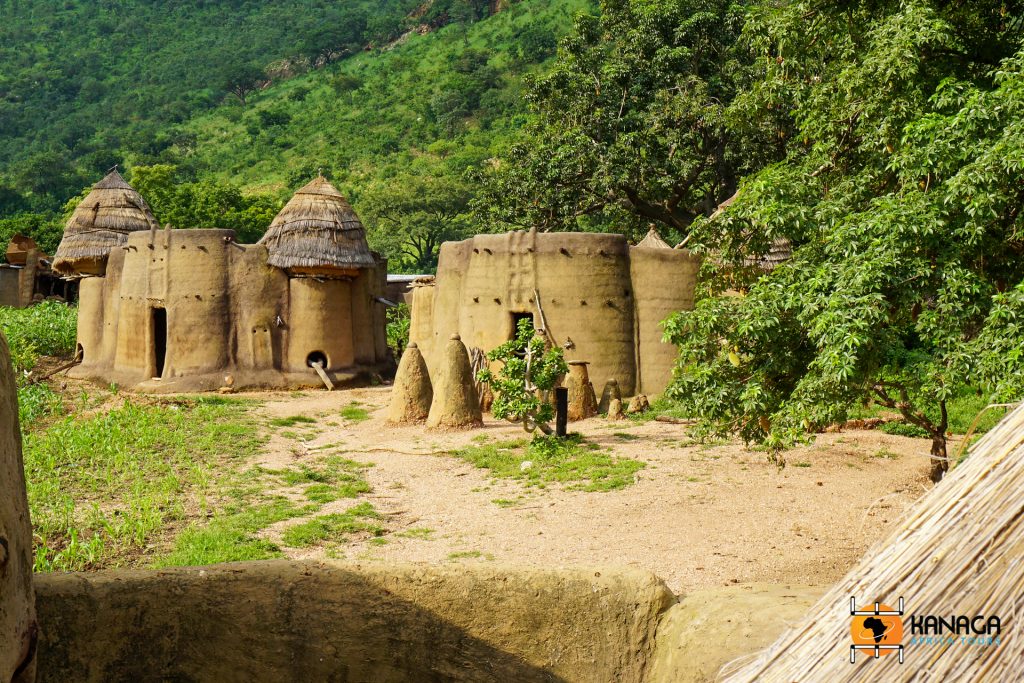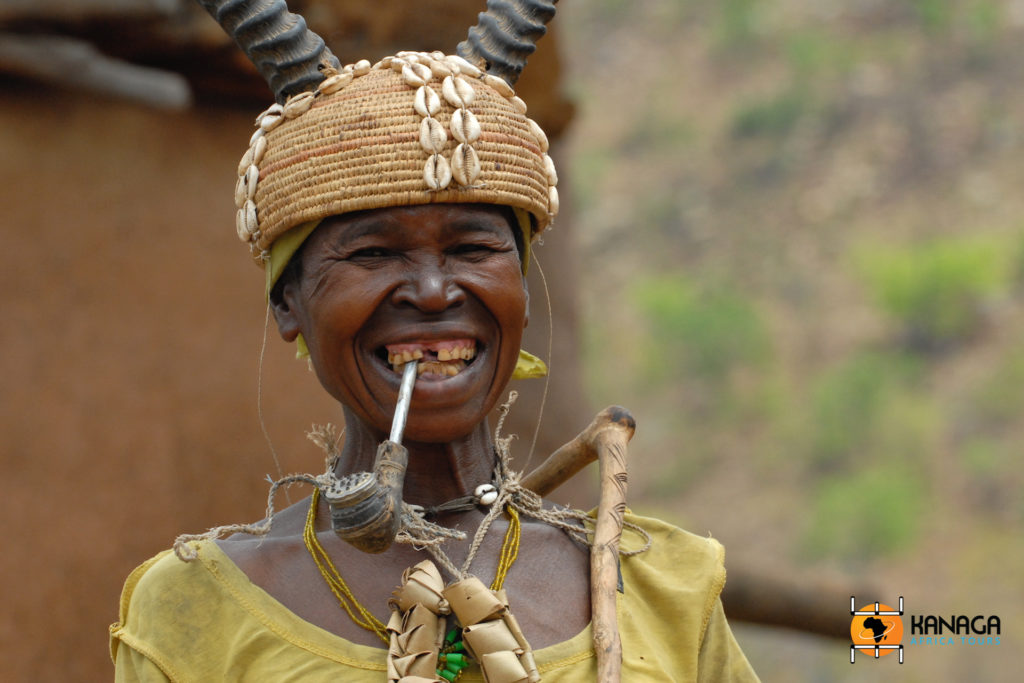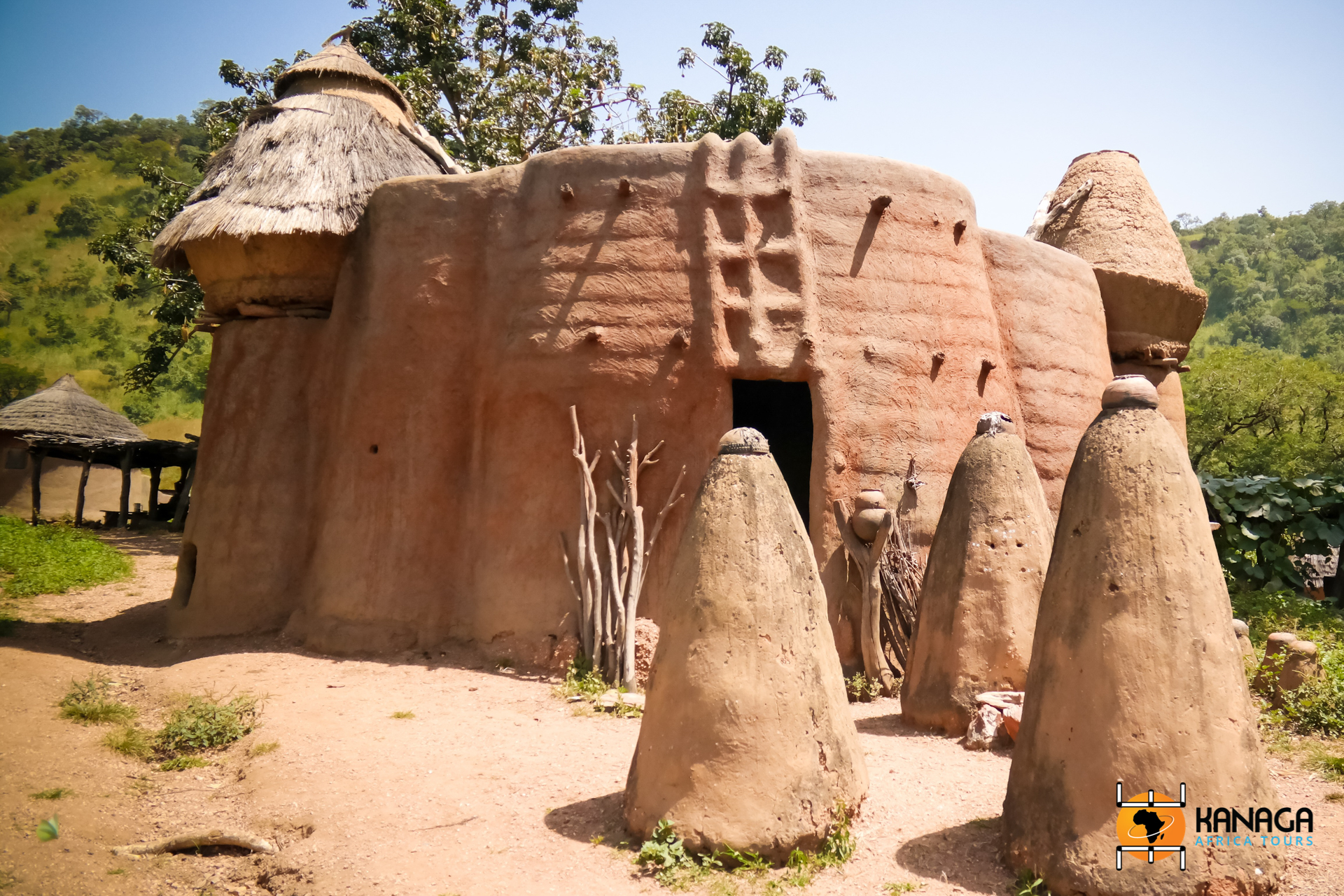The Atakora Region is one of the must-see wonders of Benin and Togo.
Koutammakou, also known as the Valley of the Tamberma or the Land of the Batammariba, after the name of the people who inhabit the area, is a must-see for anyone travelling in Togo.
The repertoire of villages in the region is truly interesting and the typical dwellings, modelled in clay like a sculpture, are the main attraction, which has earned the region UNESCO protection. They date back to the 17th century, when these peoples settled in the region to escape the southern slavery ordered by the rulers of Dahomey and the Islamic pressure coming from the north.
The main excursions depart from Kandé in the direction of Nadoba, the largest village, where every Wednesday there is a weekly market, one of the most authentic in Togo, during which you can still meet elderly feticheurs who predict the future with a stick, drawing in the sand.
The nature and scenery are also spectacular, among the most beautiful in the country, with fire-coloured dirt tracks, hillsides dotted with monumental baobab trees and scattered with traditional dwellings.
The Tamberma houses, called tata or tatchenta, are a small masterpiece of traditional defensive engineering. Local craftsmen shape them by laying overlapping layers of clay to create a sort of miniature fortified castle with a fairy-tale appearance. On the second floor, the terrace is laid on wooden hollows, on which rise circular turrets with a pointed straw hat (rooms and granaries).
A complex theory of ‘pitfalls’ was designed to keep the house under control from possible enemy attacks.
As in the Somba tata’s in neighbouring Benin, family life in the Tamberma tata’s takes place on the roof and the ground floor serves as a stable or for the elderly unable to climb the stairs. The walls are decorated with hunting trophies and, as is typical of this entirely animist people, the young man ready to marry will let an arrow shot from his bow decide where to build his new tata.
Each tata has her own ‘guardians’, a veritable army of protective fetishes, lined up in front of the door to whom the family still offers propitiatory sacrifices.
Crossing the border between Togo and Benin, one realises that the geopolitical borders imposed by the great European powers have not succeeded in dividing these peoples, who share the same customs, languages and traditions. Today, the border is crossed in a constant coming and going from one country to another, as if it did not exist, and the Batammariba people of Benin and the Tamberma people of Togo continue to meet and do business at the small market in Nadoba.







